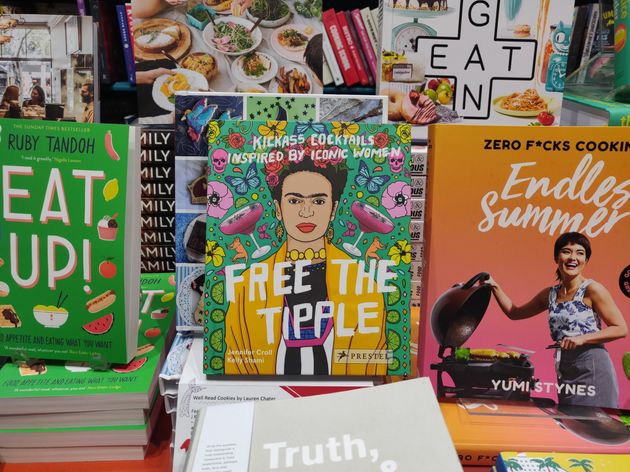
The newly released Free the Tipple book — a play on words of the ‘free the nipple’ campaign against the gendered discrimination of nipples, offers cocktail recipes alongside blurbs from some of the biggest players in the women’s rights movement. It was the perfect stocking filler — accessible, sexy feminism at its best. But this sexily stirred, not shaken approach to feminism is harming the women’s movement.
Bitch Media’s Andi Zeislar coined the term ‘Empowertising’, as a way to describe the trending commodification of feminism. Whatever word we use for it, marketplace feminism or #femvertising, co-opting the language and images of women’s liberation to make sales shouldn’t pass us by.
While it’s been happening for as long as the feminist movement won women autonomous purchasing power, the digital era has seen it expand and energised.
You can’t buy skincare, wine, leggings or ice-cream nowadays without also ‘empowering’ women.
The clever confusion brands make and hope that we buy is that these mood boosting products have some connection to women having more power to claim their rights.
Jameela Jamil’s scouting of brands hijacking the body positive movement to make sales is the same, just a different movement. Once you see it — you can’t unsee it.
Last week, The Spice Girls ‘I want to be a spice girl’ t-shirt collaboration with Comic Relief was found out for having a dirty supply chain , with workers being paid 39p per hour to make the garments.
This type of wearable feminism with sinister under-layers is not new. In 2014 Nasty Women’s ‘This is what a Feminist looks like’ t-shirts were made by Mauritian women in a sweatshop for 47p an hour.
High fashion brands like Dior also got in on the action — selling $700 ‘We should all be feminist’ t-shirts.
Nowadays, brands know best to involve a charity partner, who see fractions of the profits. A tactical armour to avoid backlash over intentions.
While a brand that donates proceeds to women’s charity is better than one that doesn’t, we need to take a close look at how these brands are relying on a genuine shift in public consciousness to support ALL women as a revenue strategy.
The most important truth is that no brand can ‘empower’ women whilst simultaneously assaulting their self esteem or basic human rights.
The other reality is that brands are smart. They know that women are no longer buying into unattainable beauty standards or outdated gender norms. They know that making women feel good about themselves is (finally) what works.
While this positive shift in messaging is a good thing, and some brands are getting it right, many use feminist symbols without the values to back it up.
Dove is a brand who does ‘empowertising’ best. Around 2004 Dove re-branded into the ‘Real Beauty’ they are today. They wanted audiences to award their ‘braveness’ to show real bodies in adverts and accept that this same brand continues to sell products that manipulate us into hating ourselves, like skin whitening face wash and cellulite creams.
Heroine sports, a latex looking active wear brand sprays ‘empowering’ all over its marketing. While active wear is damn comfy, tights are not going to be the item that brings women greater access to our rights. Instead ‘Empowerment’ is a framing that convinces a brands target audience that they’re on your side.
Breakfast brand Special K, dropped decades of pressuring us to put down the pastries and pick up the dull cereal to make sure we can fit into their iconic red bikini. In a recent shift, their ‘Powering You’ campaign tried to make breakfast cereal a feminist act — and it failed.
No matter how or where brands stick feminist language on their products it won’t change the fact that you can’t wear feminism , or snack on it. It requires as many of us as possible doing work in service of equality.
The word empowerment has now lost meaning. One argument is that the word empowerment is so palatable because it doesn’t go so extreme as to suggest that what women and girls really need is simply – power.
We dress it up with characters on each side and dilute the real objective. It’s not enough in 2019 to spread words of ‘giving women power’ as if brands are the holders of it and women simply need to passively accept it – or buy it.
From harmless to the more sinister, where these messages can cause real harm is when every message we see is saturated in empowerment and feminism, we can easily be convinced that real cultural shifts have been made. ‘Of course women are empowered – it’s everywhere!’
But it’s not the case – women’s rights are being rolled back across the world. We have a known sexual predator in the world’s highest position of power, recorded rapes in London rose by 20% in 2018, while only 2% of rapes see their rapist convicted in the UK. Over 50,000 women risk losing their jobs each year from maternity discrimination. A female bus driver in the UK will get paid 12% less than her male colleague, while a female lawyer will take a pay cut of 16% to her male equal. It’s a shit show.
Positive messages of strong women are important — but profiting off a manipulation of the women’s movement has to be recognised. If brands want to benefit from our fight for equality than they must learn to be our allies. They must step up and support policy change publicly, take responsibility for their supply chains, assess their entire range of products, not just a one-off, and ask themselves what power is activated for women in society by their product before they stick the word ‘empowering’ anywhere.


